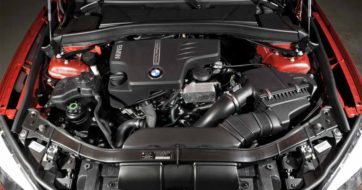How Often Do you Need Tires Rotation Service in Dubai?
When it comes to tires, they are considered as one of the most crucial parts of the car as tires are the only component in the whole car that is in direct connection with the road. From safety to the handling of the car, tires play a very vital role in all of them. The only question here is how can a component of such utter importance be taken care of when the problem has already exceeded to the point where repairing or regular maintenance isn’t even an option anymore. Nonetheless, instead of repairing and even preventing the cast from getting new tires, one of the most feasible ways that can prevent both of the situations from happening is regular rotating of the tires. Before diving into the details of how often should the tires be rotated, the more important aspect to know about is what is meant by rotating the tires and how does a car benefits from it? As per the experts at The Royal Tech, the following are some of the aspects that will help the readers get the idea about all there is to know about Tire Rotating.
Tire Rotation and why is it done?
When a car is driven frequently, the single component that is affected the most is the tires, which results in a reduction in tire life. To prevent the tires from becoming damaged, the position of the tires is moved to reduce wear and tear, thereby assisting in the maintenance of the car’s balance, which is affected by uneven tire wear and tear. Depending on how you drive and what type of drivetrain your car has, your tires may wear differently. The front tires may wear differently than the back tires, and the inside of the tire may wear differently than the outside if the tires aren’t rotated.
Now there is more than a single reason why rotating tires is very important for a longer life span of the car. The following are some of the important aspects:

- The first and most obvious benefit of tire rotation is that it saves money on new tire purchases. Tire rotation regularly extends the life of the tires. You won’t have to spend money on new tires until they’re necessary if you can get the maximum wear out of your current ones.
- Another important factor that should not be overlooked is that regular tire rotation improves fuel economy. When you drive on old or uneven tires, the engine has to work harder, which increases fuel consumption. Tire rotation helps you save money on petrol since it ensures that the load is distributed evenly across all of the tires.
- Rotation of the tires provides better handling since the load gets equally distributed despite the wear and treads on the tires. This good handling results in providing a smoother ride.
- Another aspect that certainly doesn’t go unnoticed is that when the load is distributed equally and the treads are almost the same on all the tires. It results in providing the driver with the car’s maximized performance.
- Last but not least, tire rotation gives you a sense of security because it increases the traction level of the tires on wet and slick roads, preventing vehicles from slipping and causing a violent scene. When driving on wet roads, keep in mind that the channels within the tread of the tire helps to displace water. Rotating the tires helps to guarantee an even distribution of channels in the tread, which helps to prevent hydroplaning.

When Should the Tires be Rotated?
Although the rotation of the tires depends completely on how the tires are being used. If the car is driven rashly on a daily scale, it is suggested to have them checked every month. Despite the fact, as per the manufacturer’s recommendation, it is advised for the car owners to have the tire rotation after every 3000-5000 miles, and if we are talking in months, the tire rotation must be done at least 4-5 times a year.
One thing that must be kept in mind is that, if you do rotate your tires, it certainly doesn’t mean that you won’t be needing to replace your tires. As a result, the easiest approach to tell if the tires need to be replaced is to check the manufacturer’s recommended mileage for that particular tire. It’s time to change the tires if the tread looks worn, the car doesn’t handle as well as it did when the tires were new, and they’ve reached the end of their expectancy.
You can Book a Free Inspection with our Expert Technicians in Dubai
Different Types of Car Tire Rotation
When it comes to tire rotation, it isn’t as simple as just changing the positions of the tires, there are quite a lot of aspects that need to be taken care of while doing the car rotation. The following are some of the types of car tire rotations:

1. Front-Wheel Drive Rotation
The majority of the cars nowadays come with a front-wheel-drive which means that the majority of the cars move when the engine sends power to the front wheels. Due to this, front-wheel tires wear out earlier as compared to the rear tires. One of the main reasons behind such a speeding process of the tears on the front wheel is that powering off the engine it means that all the work including turning, running, and braking is done by the front tires.
Talking about tire rotation, the forward cross is the most frequent rotational pattern for front-wheel-drive cars, in which the front tires rotate to the back on the same side of the car while the rear tires rotate from the back to the front but on the opposite side.
The X-pattern, on the other hand, is the second front-wheel-drive rotation pattern. The left front tire is connected to the left rear axle, whereas the right front tire is connected to the right rear axle. The left rear tire is then connected to the left front axle, while the right rear tire is connected to the right front axle.
2. Wheel Drive Rotation
There are some other cars that use all-wheel drive often termed as the 4*4 drive. When an automobile has this type of drive system, power is supplied to all four wheels at the same time, increasing traction on slick, damp, or uneven terrain. Both systems have a part-time mode that delivers power to either the two front tires or the two rear tires under normal driving conditions and all four wheels when driving conditions worsen. All four wheels receive equal power in all driving circumstances if your automobile has full-time all-wheel drive or four-wheel drive.
Because there are numerous modes to consider throughout the tire rotation procedure. As a result, if your vehicle is in normal driving mode and uses front-wheel drive, the tires are rotated utilizing the forward cross or X-pattern rotation. The rearward cross pattern is the optimal tire rotation pattern if your car uses rear-wheel drive in normal driving mode. The front right tire is connected to the back rear axle, while the front right tire is connected to the rear right axle.





